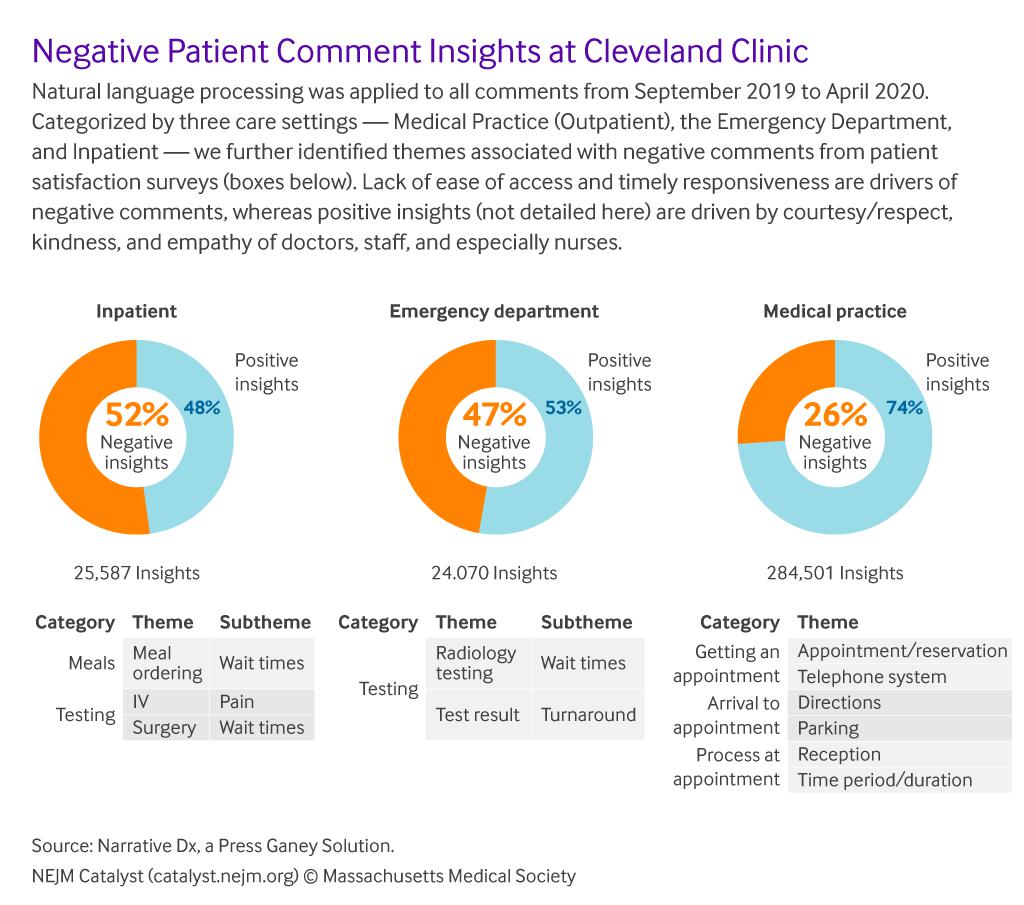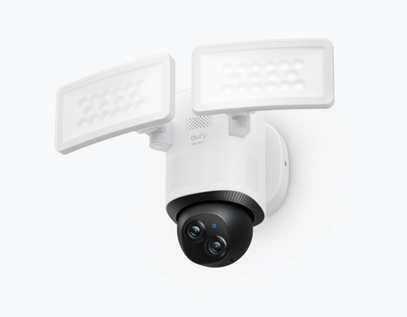Ler em português
Health care systems consistently struggle with the challenge of providing truly patient-centered care. Organizations searching for effective care delivery models can benefit from the lessons learned over the last five years by Pennsylvania’s Geisinger Musculoskeletal Institute in its drive to get clinicians to work together to improve outcomes and better serve patients’ needs.
Musculoskeletal (MSK) care encompasses much more than orthopedics: It spans the full spectrum of every element required for mobility — from our bones to our joints, muscles, ligaments, and tendons. Like physicians in many other disciplines, however, MSK practitioners have typically operated in separate spheres, leaving the burden of diagnostics to the person least equipped to manage it: the patient.
Given the structure of many health systems, patients are often expected to self-diagnose their conditions and choose the correct specialist, which requires sophisticated knowledge of what’s actually causing their problem: Is the pain related to a tibial plateau stress fracture? A patellar tendon strain? An issue with the medial patellofemoral ligament? The patient should not need to ask these questions to receive help.
By breaking down the internal barriers that separate physical therapy, pain management, and orthopedics, health systems can encourage better cross-departmental collaboration. For example, the Geisinger Musculoskeletal Institute takes an integrated approach to managing all musculoskeletal diseases, disorders, and injuries. We have specialists of every type spread across nine hospitals, but the common thread is our commitment to holistic patient care.
Creating unified MSK care teams can help health systems shift clinicians away from a coding-based mentality and toward a focus on the patient’s overall care path. To my mind, the future of MSK care delivery will depend on how well clinicians can align their services to support better musculoskeletal health across the patient’s longitudinal care journey — from primary to post-acute care. Here are three steps health systems can take to create such efficient, integrated ecosystems.
1. Create a replicable experience that patients will value.
Health care still has so much to learn from the hospitality industry, which has perfected the fine art of creating a replicable, high-value consumer experience. In order for our patients to engage with the treatments we recommend, we must first demonstrate our commitment to the patient-physician relationship.
Exceeding the patient’s expectations begins with active listening and establishing a proactive care plan to address present and future needs. At Geisinger, our patients are given an iPad during their initial clinic visit, which shows their conditions and the set of outcomes we’d like to track throughout the course of treatment. Our physicians explain exactly how the patient fits in among a larger cohort of patients with a similar condition, which lets us demonstrate how the patient compares to his or her peers. Most importantly, this conversation begins the education process regarding the outcomes this patient might expect to see.
Of course, as population health and chronic disease management initiatives have shown us, the best MSK care is preventive. From regular exercise therapy to behavioral and lifestyle changes, there are a wealth of preventive measures that have been proven to reduce chronic pain and the risk of serious MSK conditions. When patients are placed on an evidence-based care path of conservative musculoskeletal treatment, orthopedic surgery should be the very last option. Ideally, all patients should be optimized for surgery long before they become viable candidates for a procedure.
When patients do require surgery, they must be well-educated about what outcomes are typical for their specific procedures, so that they understand how to set appropriate goals for their recovery. At Geisinger, we’ve found that patients respond much better to digestible, segmented education delivered at the right time in their care journeys. Our patients stay connected to their care teams through a digital care management platform, Force Therapeutics, which uses the patient’s clinical data, treatment protocol, and interactive elements to deliver personalized content at the appropriate touch points.
Before surgery, patients log on to the care management platform to learn how they can prepare for the upcoming procedure. Afterwards, they log on throughout their recovery to create and track their recuperation goals, record their pain and activity, and complete virtual physical therapy. For rural health systems in particular, remote-care-management systems can be a tremendous help in staying connected with patients in between visits. Our platform helps care teams monitor their patients’ progress and intervene when necessary to prevent complications and readmissions. Patients can contact us through asynchronous messaging, which lets us respond quickly to patient concerns.

Recently, we’ve begun incorporating a relatively new technology into our protocols to further individualize our treatment plans. We use 3D knee kinesiography exams, which evaluate the knee in motion, to assess the patient’s gait, flexion and extension, rotation, abduction, and adduction, both before and after surgery. The biomechanical data from each patient’s personalized gait analysis feeds into our care management platform to inform a patient-specific care plan and therapy prescription.
At Geisinger, we also deploy lots of little touches designed to enhance the care experience. For example, we give patients the option of connecting to our geofencing technology, which allows us to know when patients are arriving so our receptionists can greet them by name when they walk in the door. Even our billing process is patient-centered: We make sure we explain charges well in advance, so there are never any unpleasant surprises.
In my experience, our patients are more fully engaged with their recovery process because they know that we are fully engaged with them. From start to finish, we treat each patient as an individual, not one of a multitude of knee replacement cases. By investing in well-designed technology and carefully structuring our processes, we’ve been able to make highly personalized care scalable.
2. Leverage bundled payments to drive care reform.
By bundling together all the services involved in an episode of care and agreeing to a set cost, payers and providers can collaborate to drive down the cost of care without impacting outcomes. Take advantage of the incentives offered by alternative payment models to examine and refine your protocols.
Ten years before the rise of bundled payments, Geisinger began creating evidence-based protocols for our MSK episodes that eliminated unwarranted variation in care. We found that one of the highest cost drivers was how we cared for patients postoperatively. The vast majority were discharged to high-cost rehabilitation facilities, where they received physical therapy three times a day for six weeks.
Our leadership team advocated for a transformation in our aftercare practices. Geisinger became an early adopter of a digital care management platform that enables patients to complete a physician-prescribed course of remote physical therapy from home. Before we launched the platform, approximately 80% of our postoperative patients were discharged to a skilled nursing facility. Less than a year later, only 3% required inpatient rehabilitation — with no change in outcomes.
We’re now creating innovative risk-sharing agreements with our supply chain partners, including implant manufacturers, wound care providers, and medical soft goods vendors. Each agreement ties a specific clinical outcome — such as a reduction in pressure ulcers — to the partnership commitment. These agreements allow us to offer lifetime guarantees to qualified patients receiving total hip, knee, or shoulder replacements. By partnering with our vendors and asking them to stand behind their products just as we stand behind our surgeries, we’re able to give patients greater peace of mind as they embark on an orthopedic episode.
3. Use patient-reported outcomes data at scale.
Broadly speaking, the ultimate goal of value-based care is to improve outcomes while decreasing costs. But which outcomes are most important, and how should we measure them?
Over the past decade, health care consumerism has broadened the widely accepted definitions of a valued outcome to include not only clinical and financial outcomes but also experiential ones. The quality of a patient’s care experience is now part and parcel of how the industry defines value, and that experience includes not just clinical touchpoints but the whole process: scheduling, communication, care management.
Within Geisinger’s orthopedics department, we recognize that patient-reported outcome measures (PROMs) are an invaluable assessment tool at both the individual and population health level. For many procedures, there are a number of validated PROMS that track the patient’s physical function and pain, such as the Knee Injury and Osteoarthritis Outcome Score, Joint Replacement (KOOS, JR) for knee replacements. At Geisinger, we use deidentified, aggregated patient data — in tandem with PROMs measures, which we collect via our care management platform from the vast majority of patients — to better understand how our protocols are functioning for specific conditions, procedures, and cohorts.
For many MSK episodes, however, the industry has not yet identified outcomes relevant for a particular circumstance. As MSK care encompasses such an array of conditions and procedures, PROMS must first be scientifically validated: Does this particular outcome measure apply to this specific condition as well as to this specific surgery? In order to accurately assess the quality of the MSK services we deliver, we must develop validated patient questionnaires for every type of episode.
For years, I’ve been of the somewhat controversial opinion that measuring the patient’s expectations is equally as important as measuring objective outcomes. Back in 2013, I helped develop a standardized patient self-rating tool, the TEFTOM, to assess the fulfillment of patients’ expectations as a measure of general trauma surgical outcomes. In an international study, we found significant national differences in whether patients’ expectations for their recoveries exceeded, matched, or lagged behind their physicians’ expectations.
When surgeons understand in advance exactly how their patients are defining a “successful surgery,” they can have more fruitful conversations about patients’ quality of life, the decision to have surgery, and what gains are likely within a certain timeframe. Setting expectations is crucial for a positive patient care experience, as it allows both physicians and patients to work together to achieve a meaningful goal.
Many commercial health plans require PROMs collection for participation in value-based programs, and accountable care organizations often use PROMs to incentivize providers for maintaining certain quality standards. In fact, the Centers for Medicare and Medicaid Innovation has decreed that by 2030 all Medicare fee-for-service beneficiaries will participate in a service delivery model; model performance will be assessed in part by patient-reported outcomes.
By integrating PROMs data with the patient’s clinical and demographic data in the electronic health record (EHR), health systems can eventually build a complex data repository that anticipates likely patient outcomes based on population profiles. A robust collection of PROMs can help health systems identify best practices, set accurate patient expectations, and help patients achieve their best possible outcomes.
As the industry expands the uses of PROMs data, however, orthopedic practices must ensure that PROMs scores never become the sole means of how they evaluate success. Standardized benchmarking will not help us drive care improvements if our patient-reported data isn’t meaningful, contextualized, and statistically significant. And while all surgeons love a good metric, we should be careful not to simply settle for an adequate KOOS Jr. score of 75% or above. Instead, we should keep striving to exceed the patient’s expectations.
The future of MSK care hinges on our ability to continually bring the patient back to the center of the conversation. By creating an exceptional care experience that encompasses comprehensive patient education, nonoperative treatment, individualized care protocols, remote care management, and ongoing postoperative support, we can ensure better musculoskeletal health for our patients throughout their care journey.




